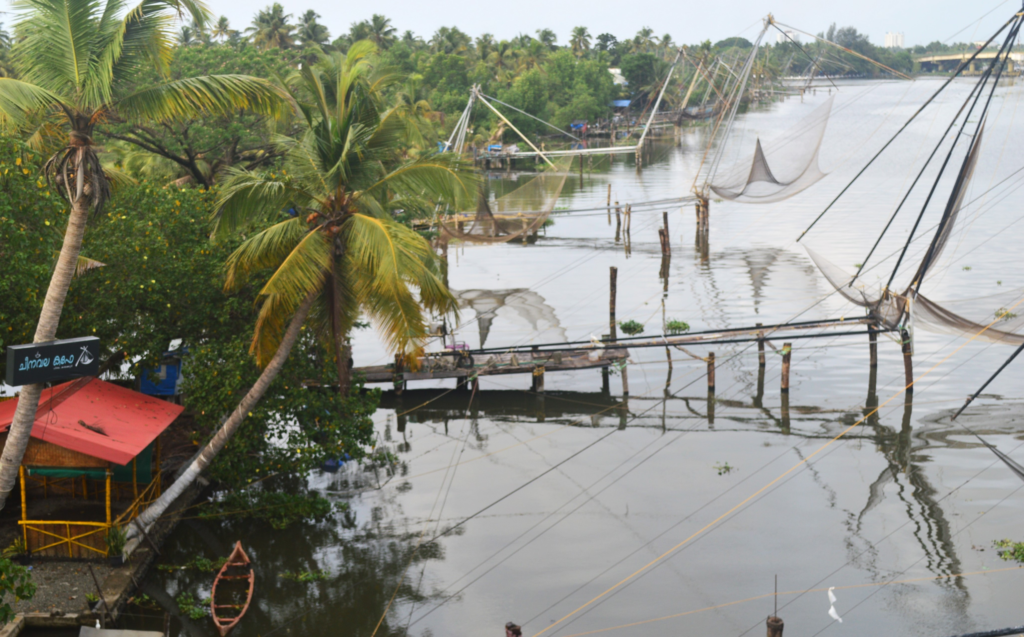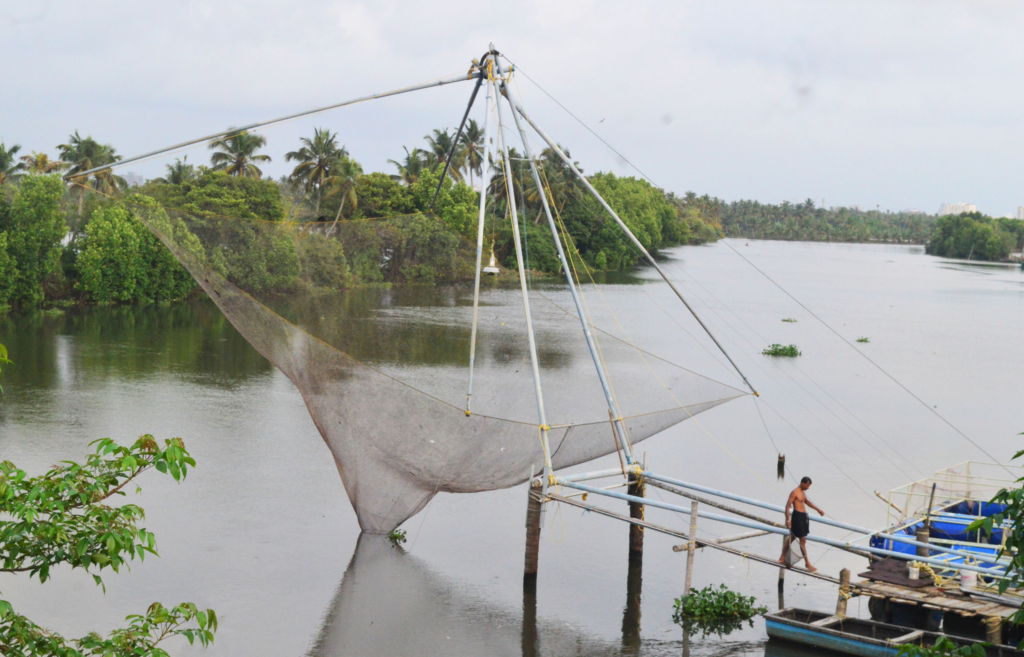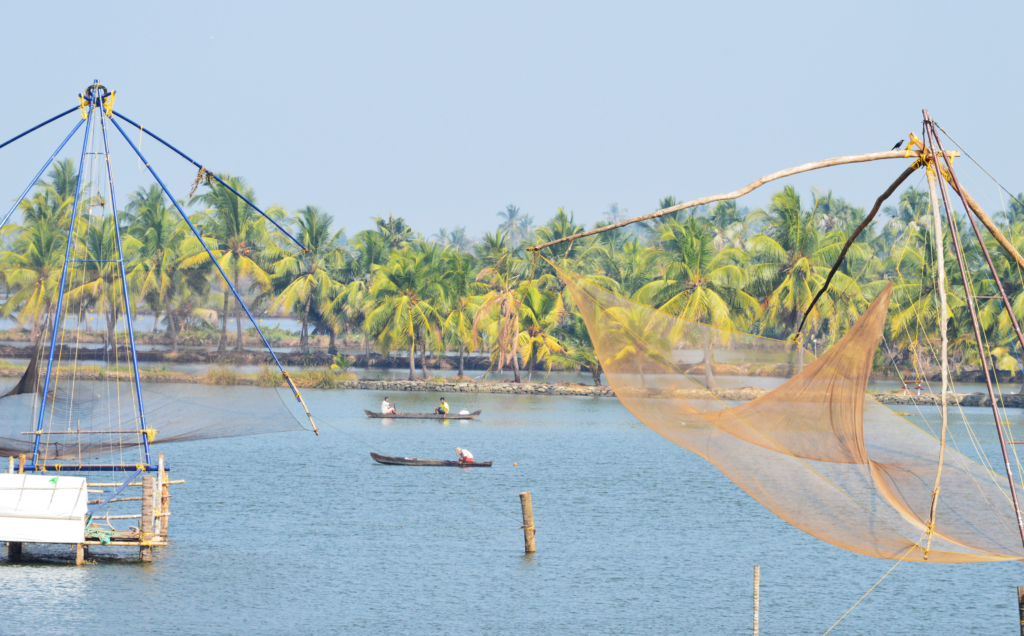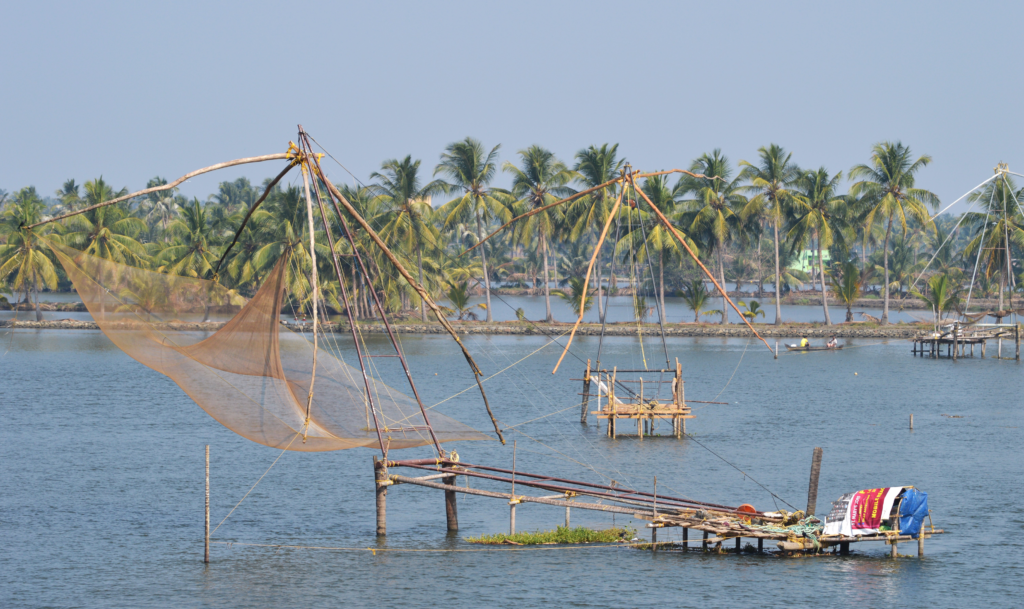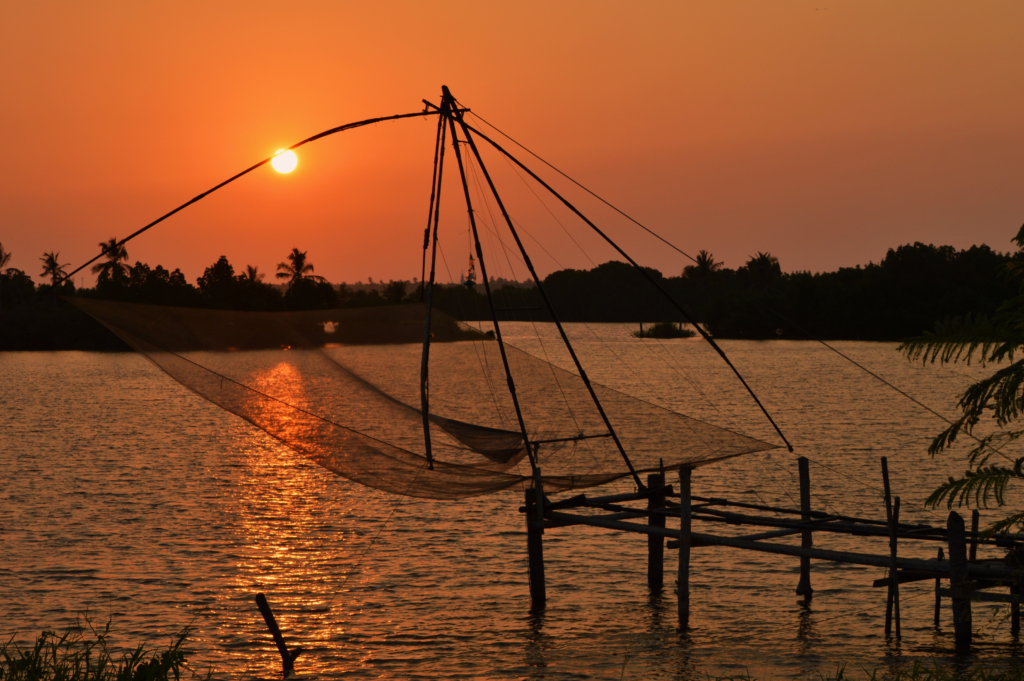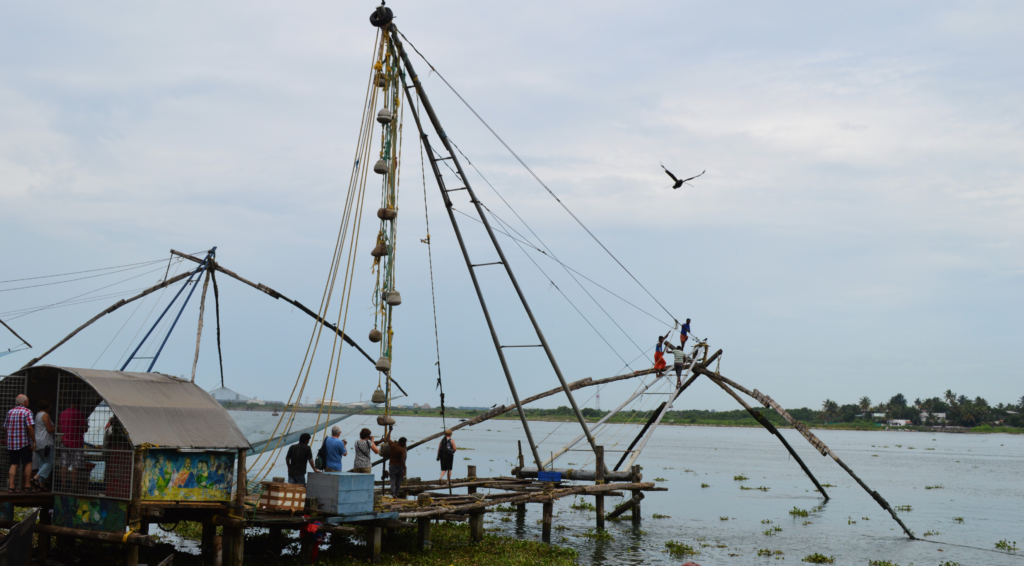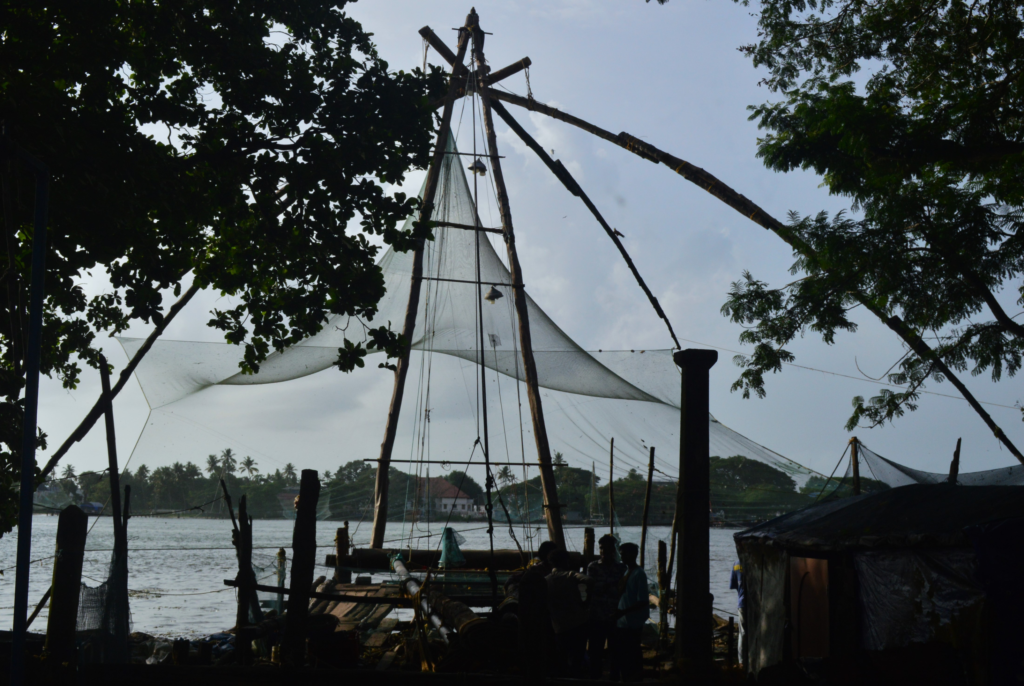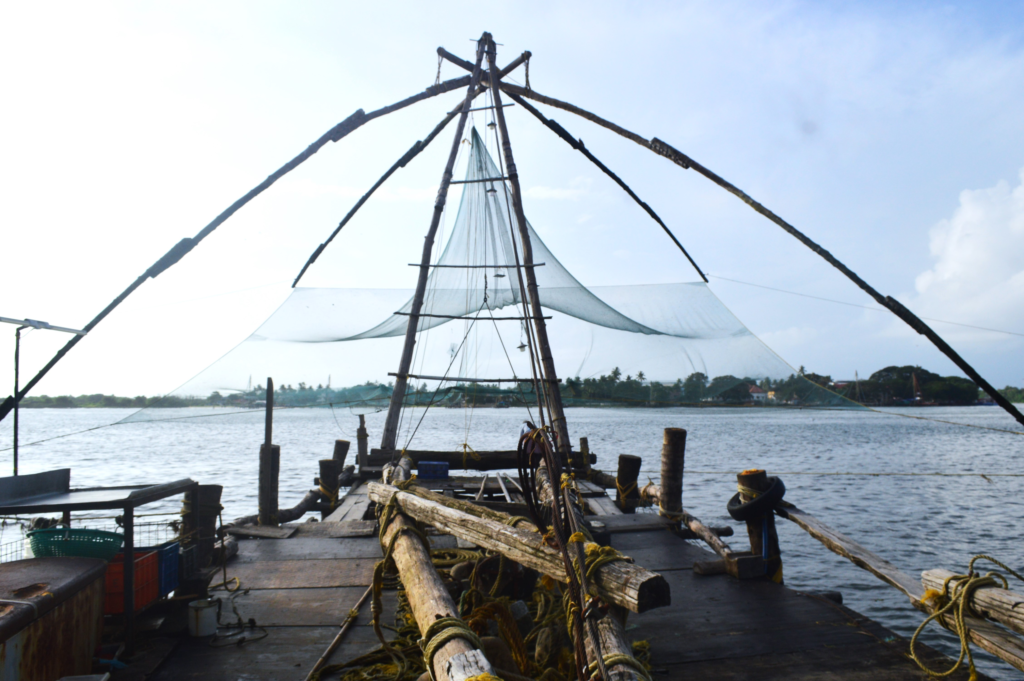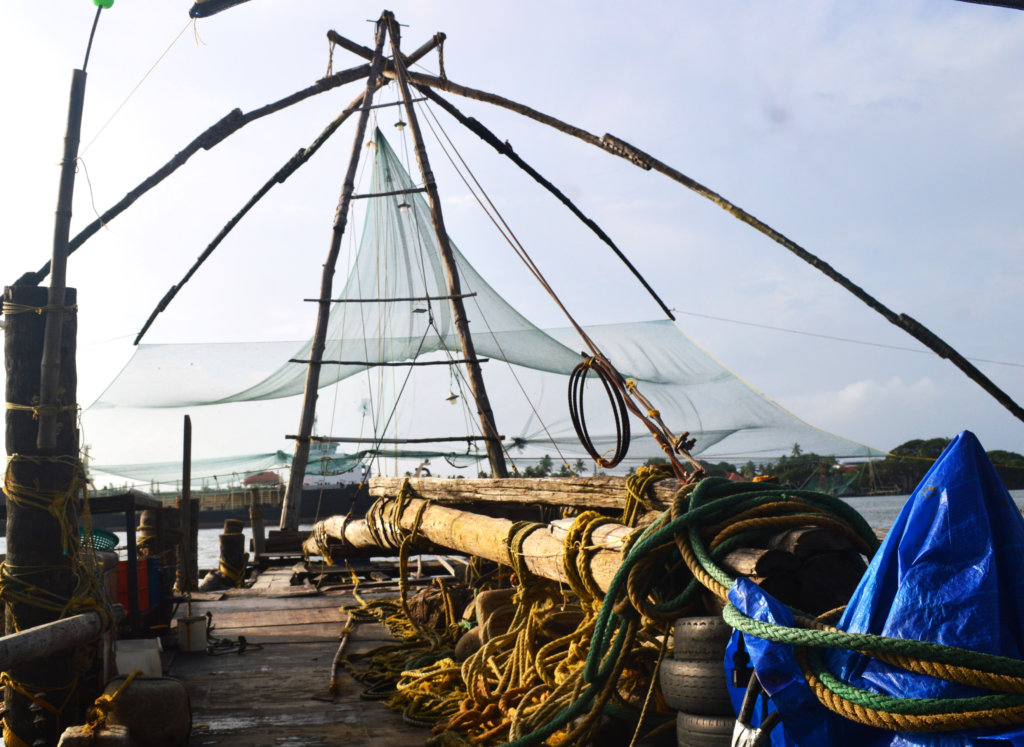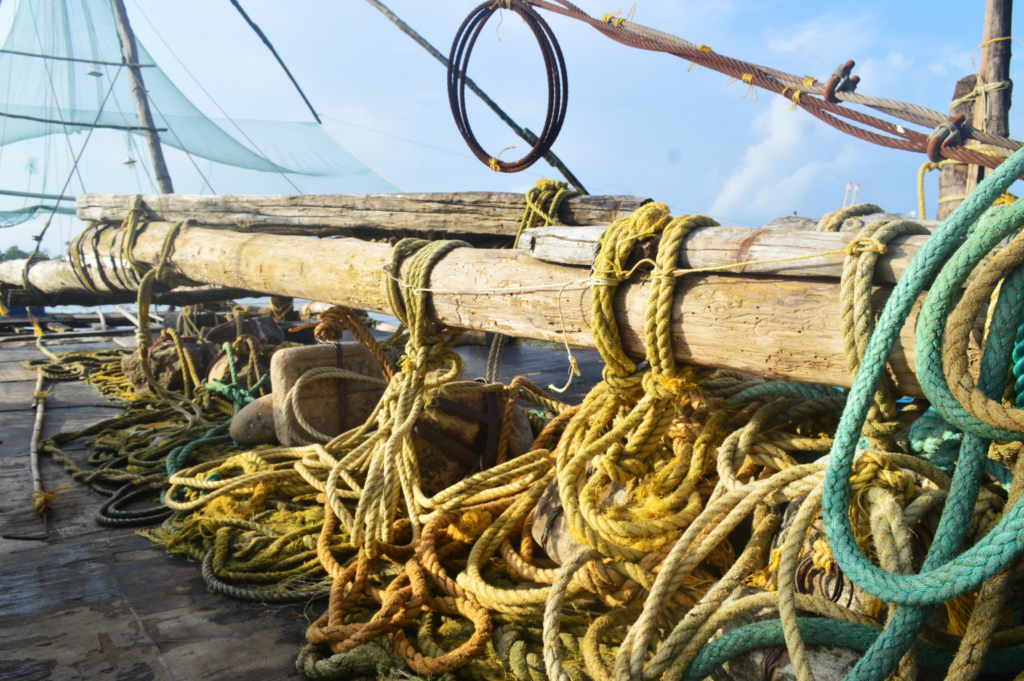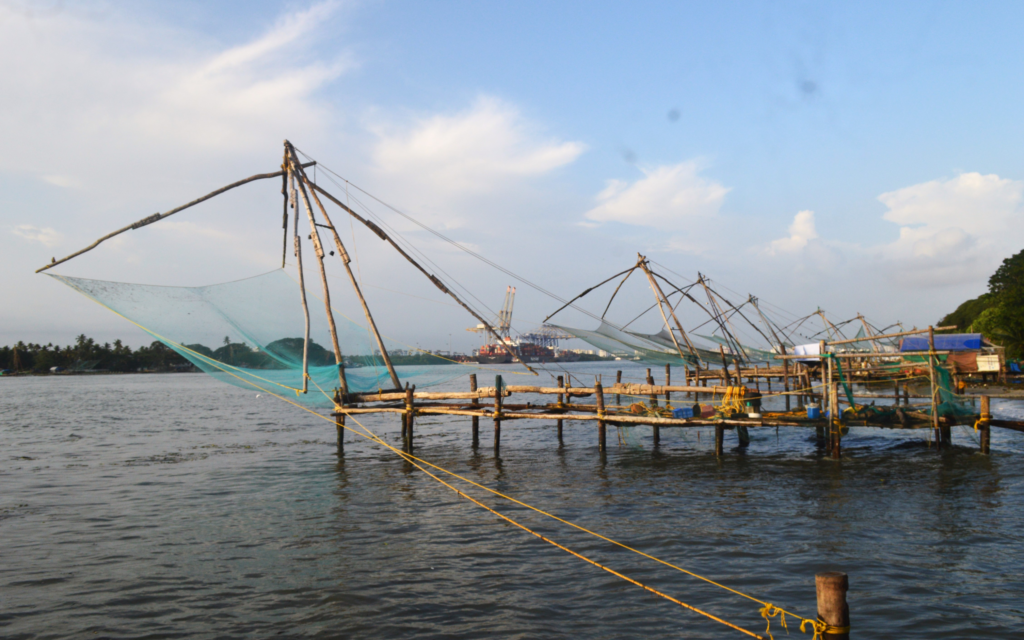Over the years, Kochi’s Chinese fishing nets (cheena vala) have transcended their humble beginning as a fishing tool to become the icon of Kerala tourism today. For centuries, it has been a livelihood for hundreds of fishermen but it has now reduced to a piece of heritage.
Going by the legend, it was introduced in Kerala by Zheng He, a 14th century spice trader from China. Some other references say traders from the court of Mongol emperor Kubla Khan brought this to Kochi, a cosmopolitan trading centre then. And yet another theory says it was introduced by the Portuguese.
Now, these spider-like structures, reaching 10 to 12 meters in height, is a major tourist attraction in Fort Kochi. But hundreds of them still dot the water bodies around Kochi, actively used by small-scale fishermen.
Each installation, a marvel of manual operation, utilizes a fixed, land-based cantilever to dip a net gently into the shallow waters. A system of pulleys and heavy stones acting as counterweights allows the fishermen to lower and raise the net, revealing the day’s catch at the cone-shaped bottom.
The cost of these structures, ranging from 1-5 lakh depending on materials used and size of the net, underscores their continued importance as a source of income. Though the iconic structure remain unchanged, wooden planks have been replaced with iron pipes due to the scarcity of wood and the heavy cost.
